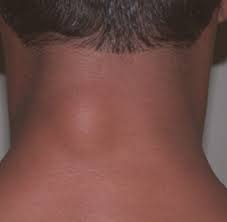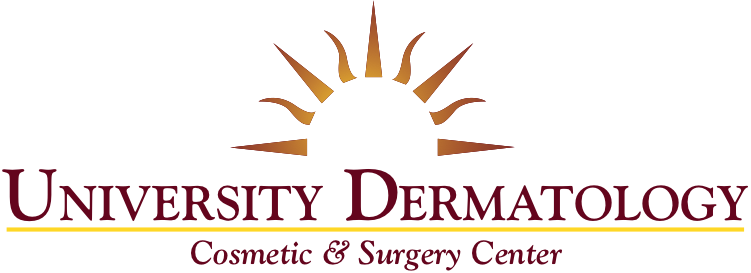
Cyst Removal
Smooth, Beautiful, Healthy Skin.
What is a Skin Cyst?
A skin cyst (also known as a sebaceous, follicular, or epidermal inclusion cyst) is a raised bump or lump under or in the skin. They can be completely painless or become red, inflamed, infected, and very painful to the touch. Cysts are common and affect each individual differently, therefore it is important that we see patients to assess the lesion and determine the proper treatment.
Skin cysts are different from pimples or acne in that skin cysts are typically larger and require different approaches to treat and remove them. However, severe acne can evolve into cysts. This type of inflammatory acne is more likely to result in scarring. Treating skin lesions early on will lessen the likelihood of further inflammation and scarring, which is why it’s so important to seek the guidance of a dermatologist.
What Causes a Skin Cyst?
A skin cyst occurs when dead skin cells and sebum block pores. Skin cysts can appear anywhere on the body, with the exception of the palms of the hand and soles of the feet. Since the pore is blocked, the body tries to break down the blockage. As part of the body’s natural response, a soft white substance (or when inflamed – pus) forms within the wall of the cyst. If the cyst is not inflamed or infected, it may stay dormant for long periods of time. If the cyst ruptures, it will produce a painful, red bump. If it becomes infected it may be called an abscess. If this happens, a dermatologist should evaluate it to offer treatment options and to prevent further infection from occurring.
How are Cysts Treated?
There are a variety of procedures that can be done to treat skin cysts. These include injecting the lesion with an anti-inflammatory agent, incising and draining the cyst, surgically removing the cyst and/or medical treatment of the associated inflammation or infection.
Typically, after the inflammation or infection has been treated, these types of cysts require complete surgical removal to insure that they will not recur. Nonetheless, the treatment will depend on the severity of the cyst, the location, the associated symptoms, how long it has been present, and whether or not it is a medical or cosmetic problem.

Appointment Request
Cyst Removal
What is a Skin Cyst?
A skin cyst (also known as a sebaceous, follicular, or epidermal inclusion cyst) is a raised bump or lump under or in the skin. They can be completely painless or become red, inflamed, infected, and very painful to the touch. Cysts are common and affect each individual differently, therefore it is important that we see patients to assess the lesion and determine the proper treatment.
Skin cysts are different from pimples or acne in that skin cysts are typically larger and require different approaches to treat and remove them. However, severe acne can evolve into cysts. This type of inflammatory acne is more likely to result in scarring. Treating skin lesions early on will lessen the likelihood of further inflammation and scarring, which is why it’s so important to seek the guidance of a dermatologist.
What Causes a Skin Cyst?
A skin cyst occurs when dead skin cells and sebum block pores. Skin cysts can appear anywhere on the body, with the exception of the palms of the hand and soles of the feet. Since the pore is blocked, the body tries to break down the blockage. As part of the body’s natural response, a soft white substance (or when inflamed – pus) forms within the wall of the cyst. If the cyst is not inflamed or infected, it may stay dormant for long periods of time. If the cyst ruptures, it will produce a painful, red bump. If it becomes infected it may be called an abscess. If this happens, a dermatologist should evaluate it to offer treatment options and to prevent further infection from occurring.
How are Cysts Treated?
There are a variety of procedures that can be done to treat skin cysts. These include injecting the lesion with an anti-inflammatory agent, incising and draining the cyst, surgically removing the cyst and/or medical treatment of the associated inflammation or infection.
Typically, after the inflammation or infection has been treated, these types of cysts require complete surgical removal to insure that they will not recur. Nonetheless, the treatment will depend on the severity of the cyst, the location, the associated symptoms, how long it has been present, and whether or not it is a medical or cosmetic problem.

At University Dermatology we have a brilliant staff of providers with many years of experience waiting to hear from you. Make an appointment today and let us help you achieve your goals.

